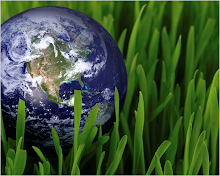Marriott Hotels have joined the Green Evolution by committing to being more eco-friendly. Their eco green concept is to recycle their gently used bedding (sheets), by donating them to the most needy. Homeless citizens can sleep easier with the donated Marriott Hotel sheets. This is an example of everyone working together to make our planet a better place to live. Job well done Marriott!
Newark Airport Marriott Hotel
Recognized for Teaming Up with Green Recoverings to Recycle Discards....
http://www.prleap.com/pr/143069
Make Recycling A Way of Life
Facts & Tips
In 2007, Americans in one state alone threw more than 7 billion bottles and cans in the trash instead of the recycling bin. Here are some recycling facts and tips to help you think twice before trashing your recyclable beverage containers.
Recycling Facts:
An average family's household throws away over 34 pounds of plastic water and soda bottles each year.
Every 90 days a recycled aluminum can makes its way back
on the shelf as something useful.
80-100 years - that's the lifespan of an aluminum can that gets tossed into the trash instead of a recycling bin.
700 years - that's how long a trashed plastic bottle will sit in a landfill taking up space and refusing to degrade.
1 Million Years - Put a glass bottle in a landfill and that's how long it'll sit there doing nothing. Recycle it and it can live forever.
Products Made from Recycled Bottles and Cans:
Plastic - recycled material products made from Plastic Bottles:
T-shirts: Fourteen 20 oz. plastic bottles yield enough fiber for an extra large T-shirt.
Carpet: It takes 14 20 oz. plastic bottles to make one square foot of carpet.
Fleece Sweater: It takes 63 20 oz. plastic bottles to make a sweater.
Jacket Fiberfill: Fourteen 20 oz. plastic bottles yield enough fiberfill for a ski jacket.
Sleeping Bag Fiberfill: It takes 85 20 oz. plastic bottles to make enough fiberfill for a sleeping bag.
Glass: - recycled material products made from Glass Bottles:
Glassware
New glass containers
Decorative home decor
Fiberglass Insulation
Tile
Aluminum:- recycled material products made from Aluminum Cans:
Picture frames
Decorative home decor: Bowls, vases, etc.
Baseball bats
Courtesy of "The Green Gift Guide"
Sunday, December 27, 2009
Sunday, December 6, 2009
Global Warming Effects the North Pole
 According to the National Snow and Ice Data Center, global warming has continued to melt the icy region in Antarctica. The North Pole is becoming a part of the planet with less ice and more water. The NSIDC tracks the arctic region and reports daily on their site, showing detailed charts and keeping updated data on the effects of global warming.
According to the National Snow and Ice Data Center, global warming has continued to melt the icy region in Antarctica. The North Pole is becoming a part of the planet with less ice and more water. The NSIDC tracks the arctic region and reports daily on their site, showing detailed charts and keeping updated data on the effects of global warming.Arctic Sea Ice News & Analysis: Warm winds slow autumn ice growth
Sea ice extent grew throughout October, as the temperature dropped and darkness returned to the Arctic. However, a period of relatively slow ice growth early in the month kept the average ice extent low—October 2009 had the second-lowest ice extent for the month over the 1979 to 2009 period.
Figure 1. Arctic sea ice extent for October 2009 was 7.50 million square kilometers (2.90 million square miles). The magenta line shows the 1979 to 2000 median extent for that month. The black cross indicates the geographic North Pole.
Sea ice extent grew throughout October, as the temperature dropped and darkness returned to the Arctic. However, a period of relatively slow ice growth early in the month kept the average ice extent low—October 2009 had the second-lowest ice extent for the month over the 1979 to 2009 period.
Figure 1. Arctic sea ice extent for October 2009 was 7.50 million square kilometers (2.90 million square miles). The magenta line shows the 1979 to 2000 median extent for that month. The black cross indicates the geographic North Pole.
NSIDC.ORG
Labels:
Antarctica,
Arctic Ice,
Arctic Sea Ice,
Global Warming,
North Pole
Tuesday, October 20, 2009

10 Reasons to Eat Organic Foods
- Grown without pesticides, synthetic fertilizers, and other cancer causing synthetic chemicals.
- Grown by local farmers, which elimates polluting gases from transporting vehicles.
- Contains more natural ingredients, which are healthier for you.
- Natural flavors are better tasting.
- No additives such as fats, salts, and artificial sweeteners.
- Organic farming systems rely on ecologically based practices.
- Organic farmers abide by stricter USDA policies.
- Fresher foods with less time from the garden to the market.
- Richer healthier soils and vegetation produces healthier organic products.
- Organic farms are better for the environment, and doesn't interfere with nature's natural inhabitant.
Thursday, October 15, 2009
America's National Parks - PBS Special
Our National Parks are our most prized possessions, and the best real estate on the planet. We own it and should do our part to take care of the land. The breathtaking views and natural settings are impossible to replace. Let's work towards a cleaner and healthier planet, so we can continue to enjoy its glorious beauty and natural environments.
Labels:
Eco friendly,
Going Green,
green,
National Parks,
Natural environment,
nature,
organic,
PBS,
save the planet
Subscribe to:
Comments (Atom)

